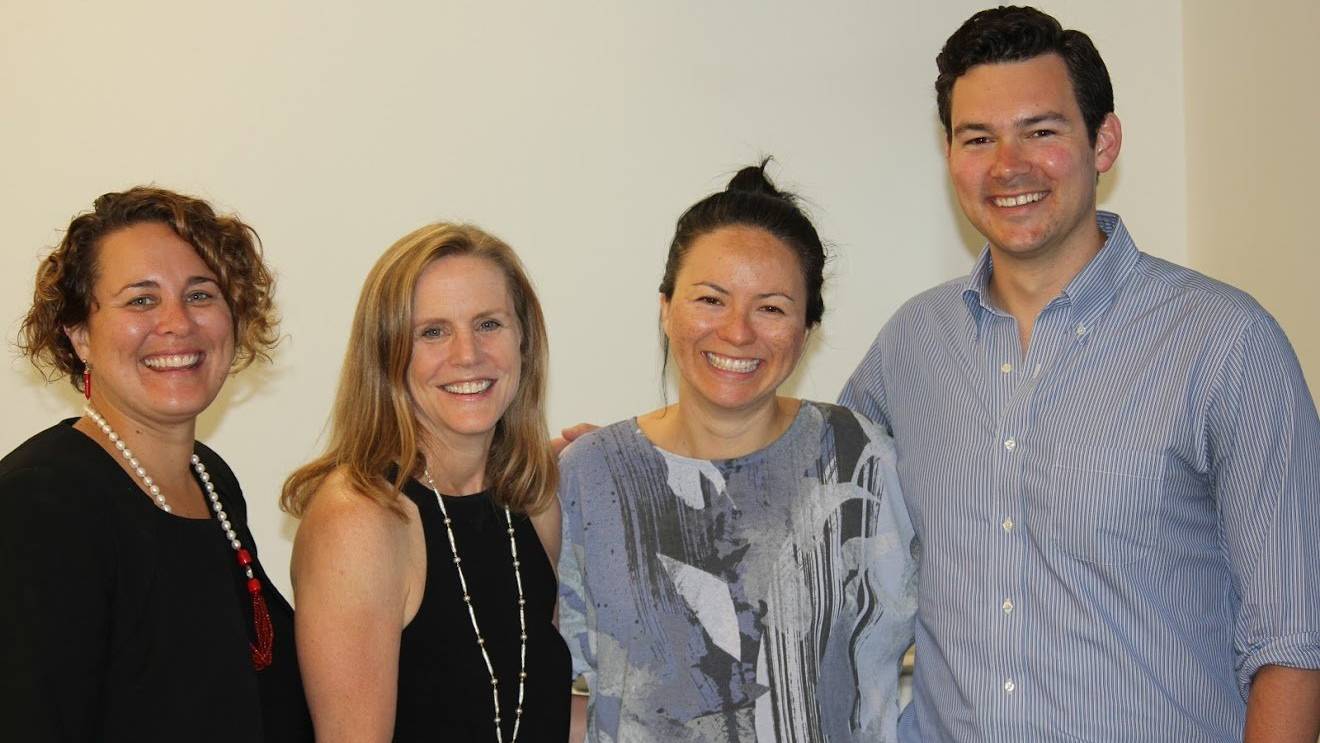Lessons from Funders – How to Master Fundraising

While at Intuit, we had the fortune of receiving incredible lessons from funders. Four funding leaders working in the worlds of foundation and venture philanthropy spoke during a panel discussion to Fast Forward’s accelerator cohort.
On the panel were Katie Berroth, Director of Investment Management at theOmidyar Network; Christy Chin, Partner at theDraper Richards Kaplan Foundation; Jessamyn Shams-Lau, Executive Director at thePeery Foundation; and Jonny Dorsey, Director of Innovation and Policy at theEmerson Collective. These four funders generously shared their expertise and insights, providing actionable tips for how tech nonprofit startups should approach fundraising from institutions like theirs.
How is the the family foundation grant making process different from other funders?
Family foundations vary widely in their giving strategies. Always be proactive in asking potential funders about their processes and expectations to make sure you are a good fit for each other. Additionally, building strong relationships with your advocate within the family foundation is key. A lot of foundation philanthropy depends on emotional empathy. Your mission must resonate with the family and the board on a personal level, and appeal to their emotional interests. Creating a strong personal connection with your advocate will allow them to effectively convey that same emotional conviction to their board members.
How do you approach a funder who may not be comfortable with technology?
Sometimes your advocate/program officer might not be very tech literate. So help them out by demystifying the technology aspect of your work. Explain how you are using a proven technology to address a pressing social need.
You must be able to convey the strengths and advantages of a tech nonprofit: have a rock-solid answer for why your business is structured this way. Emphasize the unique opportunity of the tech nonprofit model, which is highly iterative and can rapidly scale after achieving product-market fit. Find out how other successful tech nonprofits have framed their case, and incorporate their successful fundraising approaches.
While tech may be central to your work, it need not be the focus of your pitch. Explain the technology by walking through the user experience. Nonprofits should be selling an outcome: a future world in which the problem you are addressing is no longer an issue. Sell the story of that future first and foremost. The technology is the mechanism by which you achieve that better future at scale.
How does the venture mindset, or the impact outcome, shift how you think about potential grantees?
Venture philanthropy institutions are less averse to risks than typical foundations. This can give nonprofits more freedom to be open about their challenges and test whether or not their model is working. Having a venture philanthropist as a funder typically requires a heavy time investment including frequent calls, intensive support, and questioning. Be sure this is what they’re looking for. You should have criteria to determine which grants are right for you. How much time do you want to invest? Do you want a one time grant, or a partnership? Venture philanthropy is not simply transactional funding.
Words of Wisdom
DO…
Encourage your funders to be on the lookout
Train your funder to use their network to your advantage. If you keep your funders updated on what your deepest needs are at all times, they can keep an eye out for other funders, resources, or opportunities that they could refer you to. Funders network with each other often. Don’t be afraid to ask your current funders to advocate for you or make an introduction.
Make the ask
Come to funders with confidence: let them know that you are doing amazing things. You shouldn’t be apologetic for asking for resources. If you truly believe that you will do the most good with those resources, your funder will believe it as well. Once you make the ask, don’t say anything else: let it hang in the air. Let them respond first.
Get a warm introduction
When soliciting a grant from a potential funder, talk to someone who knows the funder and ask for an introduction. Make sure the person making the referral really knows you before they send an email so that it’s a glowing introduction.
Connect with current or former grantees
The best way to learn about what a funder looks for and what their funding relationships look like is to speak with that funder’s grantees. Don’t miss this crucial step.
DON’T…
Make promises that you can’t deliver on
Be careful about putting out timelines as a nonprofit, unless you are sure you will meet deadlines. If fall behind on the promised deliverable, your contact at the foundation may bring that information to the board. If you don’t have it by that time, you make your contact less credible and less able to advocate for funds on your behalf.
Withhold information from funders
Funders are incredibly busy, so make information easily and readily available for them. If an organization asks you to send materials in advance, do it. Make it easy for your advocate to understand your organization’s need, and keep them up to date with any new developments. If you don’t, you will make it harder for them to lobby on your behalf.
Pass up an opportunity to be a reference
If you get a no from a prospective funder, propose another organization that the funder might be interested in. If you get a yes, be a reference for other organizations that you believe in. Relationships and networks are incredibly important in the nonprofit startup sector, and your generosity will be rewarded.
Thank you so much to our panel for taking the time to share some of the lessons they’ve learned from decades of experience in the philanthropic world and to Intuit for hosting us!